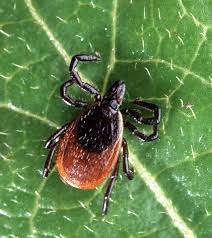Powassan Virus in Maryland: Understanding a Rare and Tragic Case

In a somber announcement, the Maryland Department of Health has confirmed the first-ever case and fatality attributed to the Powassan virus within the state. This unsettling revelation underscores the urgency of understanding this rare disease and its potential implications.
Powassan Virus Emerges in Maryland
On September 22nd, the Maryland Department of Health delivered the distressing news of Powassan’s presence, a virus transmitted through the bite of an infected tick. This revelation has sent shockwaves through the community and beyond.
A Grief-Stricken Statement
In a poignant news release, Deputy Secretary for Public Health Services, Dr. Nilesh Kalyanaraman, expressed the deep sorrow surrounding this unprecedented case: “We are very saddened to report the first death due to the Powassan virus in our state. Powassan is very rare, and this is the first-ever case recorded in Maryland. The individual contracted the virus in Canada and returned to Maryland afterward. We do not believe that Powassan poses any threat of local transmission in Maryland. As always, we urge everyone to practice good habits when in areas that could have ticks or avoid those areas altogether.”
Understanding Powassan
Powassan, according to the Centers for Disease Control and Prevention (CDC), is an exceedingly rare virus that cannot be transmitted from person to person, except in exceptional cases involving blood transfusions. Regrettably, there are currently no vaccines or medications available for the prevention or treatment of this debilitating disease.
Seasonal Concerns
It’s important to note that most Powassan cases in the United States emerge in the northeast, primarily during late spring and into the fall when ticks are most active. This seasonal pattern underscores the importance of vigilance during these months.
Protecting Yourself Against Powassan
Given the grave nature of this virus, it is paramount to take proactive steps to reduce contact with ticks:
1. Choose Your Environment Wisely
- Avoid Wooded Areas: Stay clear of wooded and brushy areas with high grass and vegetation. Ticks thrive in such environments, making them a potential danger zone.
2. Post-Exposure Check
- Thorough Body Inspection: After returning from areas where ticks might be prevalent, perform a meticulous check of your entire body. Early detection can be crucial in preventing the transmission of Powassan.
Recognizing Symptoms
Though many individuals infected with the Powassan virus remain asymptomatic, it’s essential to be aware of the potential symptoms, which may include:
- Fever: A sudden onset of fever can be an early indicator.
- Headache: Persistent headaches should not be ignored.
- Vomiting: If unexplained vomiting occurs, seek medical attention promptly.
- Weakness: A notable decline in energy levels or physical strength may be a sign of infection.
Conclusion
The Powassan virus has made its presence felt in Maryland with a tragic first case and fatality. While the risk of local transmission remains low, vigilance and proactive measures are vital in protecting oneself from this rare but potentially life-threatening disease. Stay informed, stay cautious, and seek medical attention promptly if you experience any concerning symptoms. Together, we can navigate this unprecedented health challenge.





